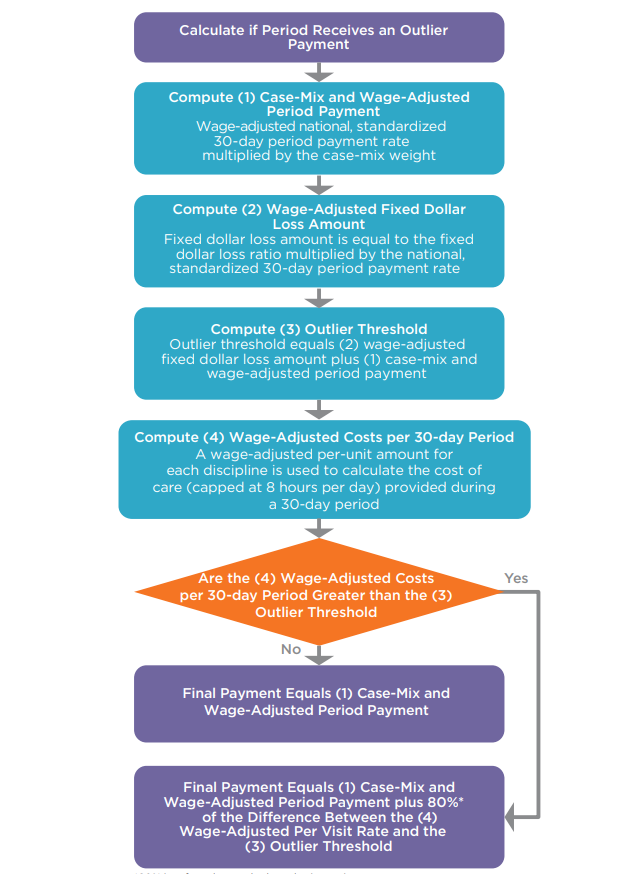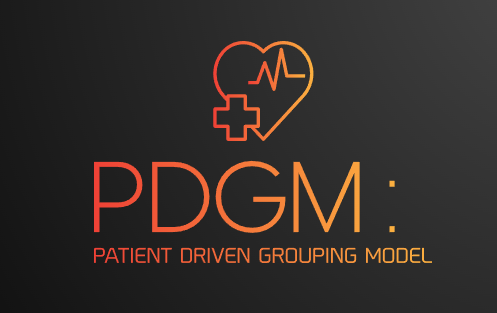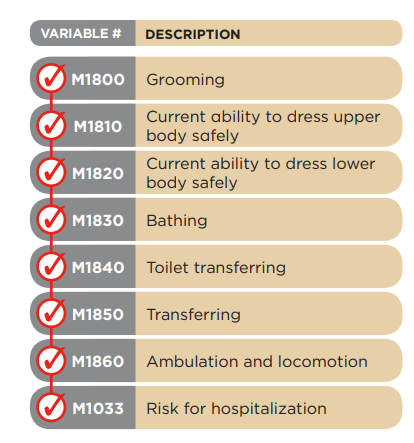PDGM Home Health Coding Guidelines: How does PDGM affect home health?
In this article, we are going to discuss PDGM Home Health Coding Guidelines and how it will impact home health. PDGM also called as Patient Driven Grouping Model became effective from 1 Jan,2020 and replaced Prospective Payment System (PPS) model successfully. (PDGM Home Health Coding Guidelines)
What is PDGM ?
PDGM – Patient Driven Grouping Model
- It became effective from 01 Jan, 2020
- It replaces the previous re-imbursement model PPS
- Centers for Medicare & Medicaid Services (CMS) first proposed PDGM in July 2018
- PPS – Prospective Payment System
- PPS was implemented in 2020
Overview of the PDGM (Patient-Driven Groupings Model) :
- PDGM uses 30-day periods as a basis for payment
- 30-day periods are categorized into 432 case-mix groups
- 30-day periods are placed into different subgroups for each of the following broad categories:
• Admission source (two subgroups): community or institutional admission source
• Timing of the 30-day period (two subgroups): early or later
• Clinical grouping (twelve subgroups): musculoskeletal rehabilitation; neuro/stroke rehabilitation; wounds; medication management, teaching, and assessment (MMTA) – surgical aftercare; MMTA – cardiac and circulatory; MMTA – endocrine; MMTA – gastrointestinal tract and genitourinary system; MMTA – infectious disease, neoplasms, and blood-forming diseases; MMTA – respiratory; MMTA- other; behavioral health; or complex nursing interventions
• Functional impairment level (three subgroups): low, medium, or high
• Comorbidity adjustment (three subgroups): none, low, or high based on secondary diagnoses
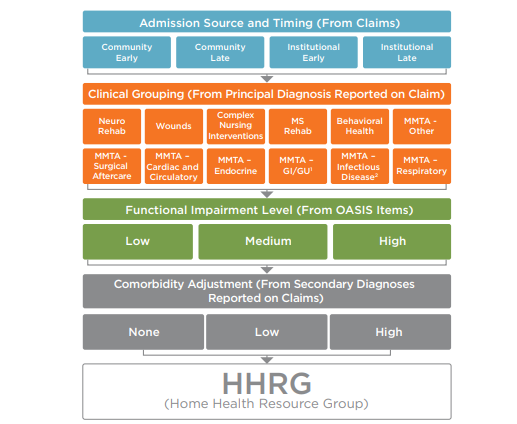
Changes of Timing in PDGM :
- First 30 days period will be considered as “Early”
- Each subsequent 30-day period will be considered as “Later.”
“According to CMS, the comprehensive assessment should be completed within five days of SOC and updated no less frequently than during the last five days of every 60-day episode, beginning with SOC.”
Clinical Grouping in PDGM( Patient Driven Grouping Model):
The PDGM classifies each 30-day period of care by principal diagnosis into one of 12 clinical groups or subgroups:
1. Musculoskeletal Rehabilitation
2.Neuro/Stroke Rehabilitation
3.Wounds: Post-Op Wound Aftercare and Skin/Non-Surgical Wound Care
4.Complex Nursing Interventions
5.Behavioral Health Care
MMTA
6. Surgical Aftercare
7. Cardiac/Circulatory
8. Endocrine
9. GI/GU
10. Infectious Disease/Neoplasms/Blood-Forming Diseases
11. Respiratory
12. Other
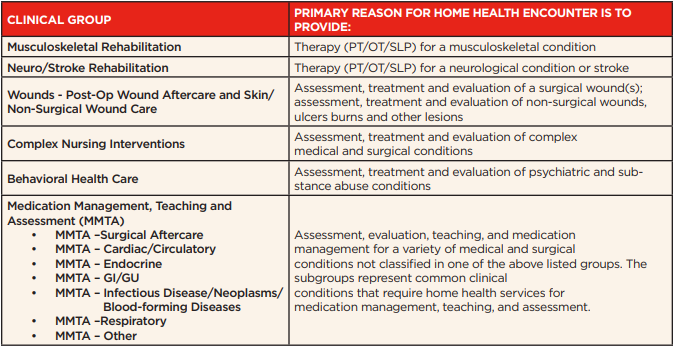
Level of Functional Impairment : Low / Medium / High
Under PDGM, level of functional impairment is designated for each 30-day period based on following 8 OASIS assessment items:
- Grooming
- Current ability to dress upper body safely
- Current ability to dress lower body safely
- Bathing
- Toilet Transferring
- Transferring
- Ambulation and locomotion
- Risk for hospitalization
Adjustment of Comorbidity :
“According to CMS, comorbidity is tied to poorer health outcomes, more complex medical needs and management, and higher care costs. The PDGM will designate a comorbidity adjustment of low, high, or none for each 30-day period based on a patient’s secondary diagnoses reported on the claim.”
- A low comorbidity adjustment is considered if secondary diagnosis is reported and that is associated with higher resource use.
- A high comorbidity adjustment is considered if two or more secondary diagnoses are reported together and those are associated with higher resource use.
- No comorbidity adjustment in case of no documented secondary diagnoses that fall into either the low or high comorbidity adjustment.
Remote Patient Monitoring:
- Under PDGM, For HHAs – Remote Patient Monitoring (RPM) is an allowable cost
CMS defines RPM as the collection of physiologic data (vital signs, weight, blood pressure, blood oxygen levels, glucose monitoring, heart rate and ECG) that is digitally stored and/or transmitted by the patient and/or caregiver to the HHA. Under PDGM, RPM will not be directly reimbursed, but can be reported as an operating expense.
CMS Administrator Seema Verma says “This rule… innovates and modernizes home health care by allowing remote patient monitoring,”
PDGM Payment & Adjustment Calculation:
With the help of this figure you will be able to understand How Payments and Adjustments are calculated for the Patient driven Grouping Model(PDGM)
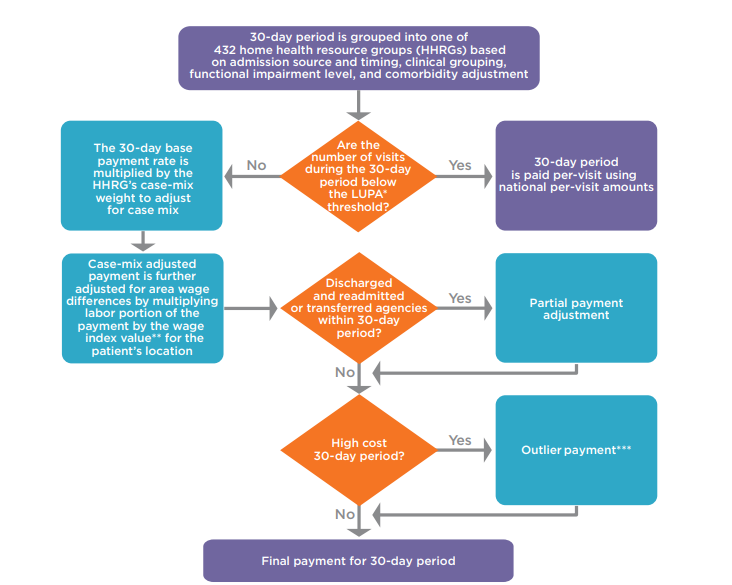
CALCULATION OF OUTLIER PAYMENT:
With the help of this figure you will be able to understand calculation of outlier Payment
